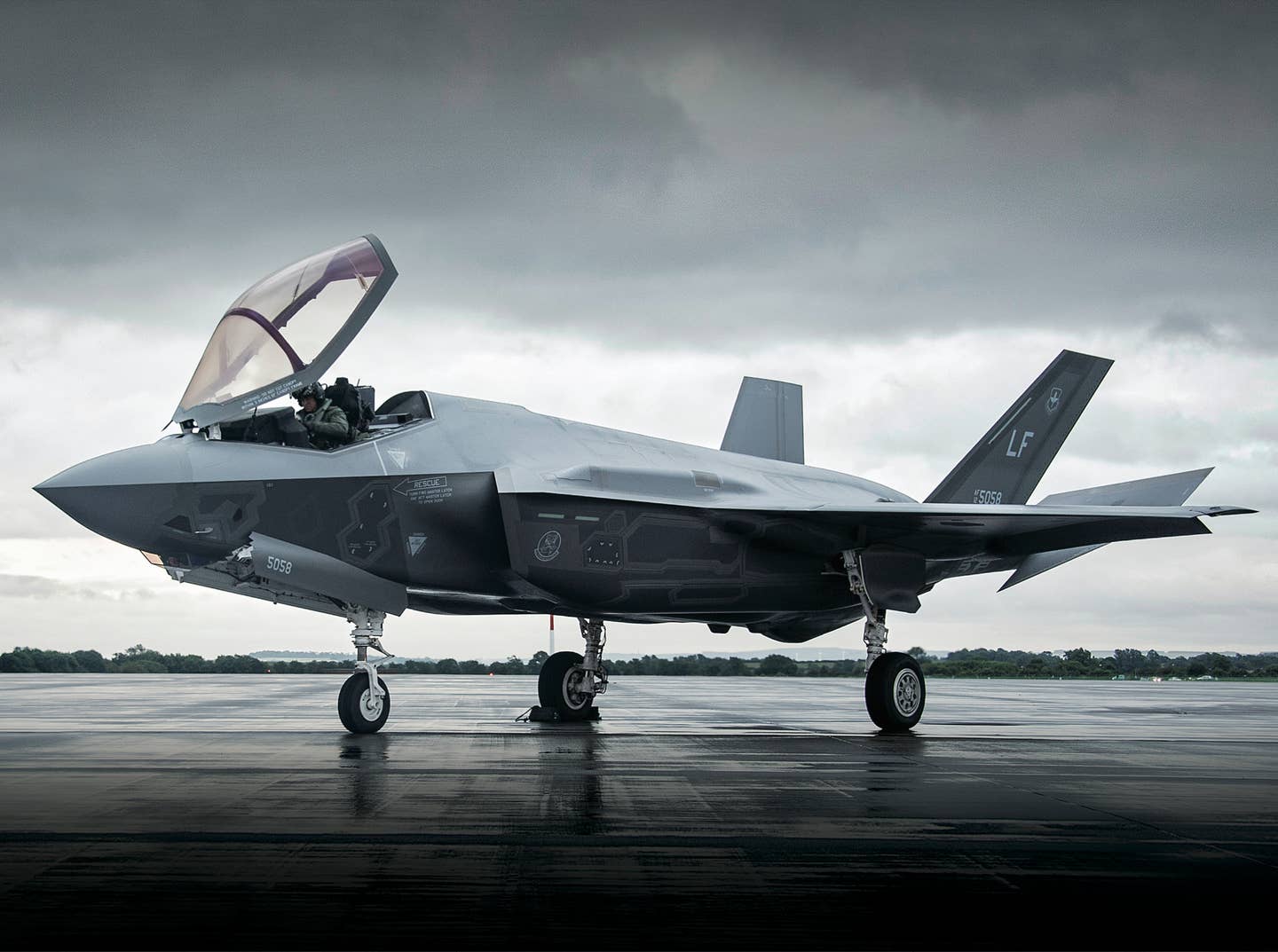Pratt and Whitney Gets $4.4 Billion To Develop F-35 Engines
F-35 prices continue to climb; officials look to rein in cost.

Pratt and Whitney will make 178 new engines for F-35a Lightning IIs like this one. [Courtesy: Lockheed Martin]
Despite recent concerns from the Government Accountability Office regarding production delays and costs of the military’s F-35 fighter program, the Department of Defense (DOD) awarded Pratt and Whitney (NYSE: RTX) a modified $4.4 billion contract for 178 new engines for the stealth-enabled aircraft.
According to the DOD, Pratt & Whitney will develop 152 PW-100 engine variants, of which 108 will be for the Air Force, 29 for the Navy, and 15 for the Marine Corps. Another 26 PW-600 engines will be made for the Marine Corps’ F-35B variant that has vertical takeoff and landing capabilities.
Pratt & Whitney will also develop parts and materials for the engines for non-U.S. Department of Defense (DOD) participants and Foreign Military Sales (FMS) customers, per the contract. Finally, provisions were made in the budget to develop a short take-off vertical landing (STOVL) developmental test engine for flight test efforts.
The contract seems to solidify the DOD’s commitment to the F-35. However, not all government agencies are as sold on the program. In April, the GAO published a report that said the DOD had already purchased a third of all the available F-35s before even determining whether the aircraft would be ready for full-rate production. Moreover, it said operational testing of the F-35s kept getting delayed because of holdups in building a simulator for the aircraft. Plus, the modernization effort for the fighter jet is now delayed by at least four years because of increasing equipment costs and schedule delays.
The DOD has spent more than $1.7 trillion to buy, operate, and sustain the F-35 program, making it the most expensive weapons system program in the U.S military. The modernization program is now expected to be completed in 2029.
Acknowledging the growing cost of the F-35 program in an update to investors recently, Lockheed Martin’s (NYSE: LMT) CEO, Jim Taiclet, said the fighter is worth the investment as it is “unmatched as an aircraft,” primarily because of its stealth capability and survivability in hostile environments. Taiclet even shared that U.S. Air Force Chief of Staff Charles Brown described the F-35 as “the quarterback of the U.S. Air Force future strategy because of all those capabilities.” However, he admitted that the pandemic, increasing inflation costs, and some lower international orders were some of the drivers that are now pushing the F-35s to cost between $77 and $101 million per aircraft, depending on the variant.
Given the recent $4.4 billion contract with Pratt & Whitney, the F-35 program is moving forward regardless of cost. The contract with Pratt & Whitney is expected to be completed in September 2024. The DOD said more than 25 percent of the work would be completed in Connecticut, the company’s home state. Deliveries would begin this year and continue through 2025.
If Pratt & Whitney exercises all of the available contract options, it could produce up to 518 engines for the program, valued at $8 billion altogether.
The Pentagon’s newly appointed director of the F-35 Joint Program Office, Air Force Lt. Gen. Michael Schmidt, will now face the tall task of working with Lockheed and some of its contractors, like Pratt & Whitney, to rein in the cost of the fighters.

Sign-up for newsletters & special offers!
Get the latest FLYING stories & special offers delivered directly to your inbox






